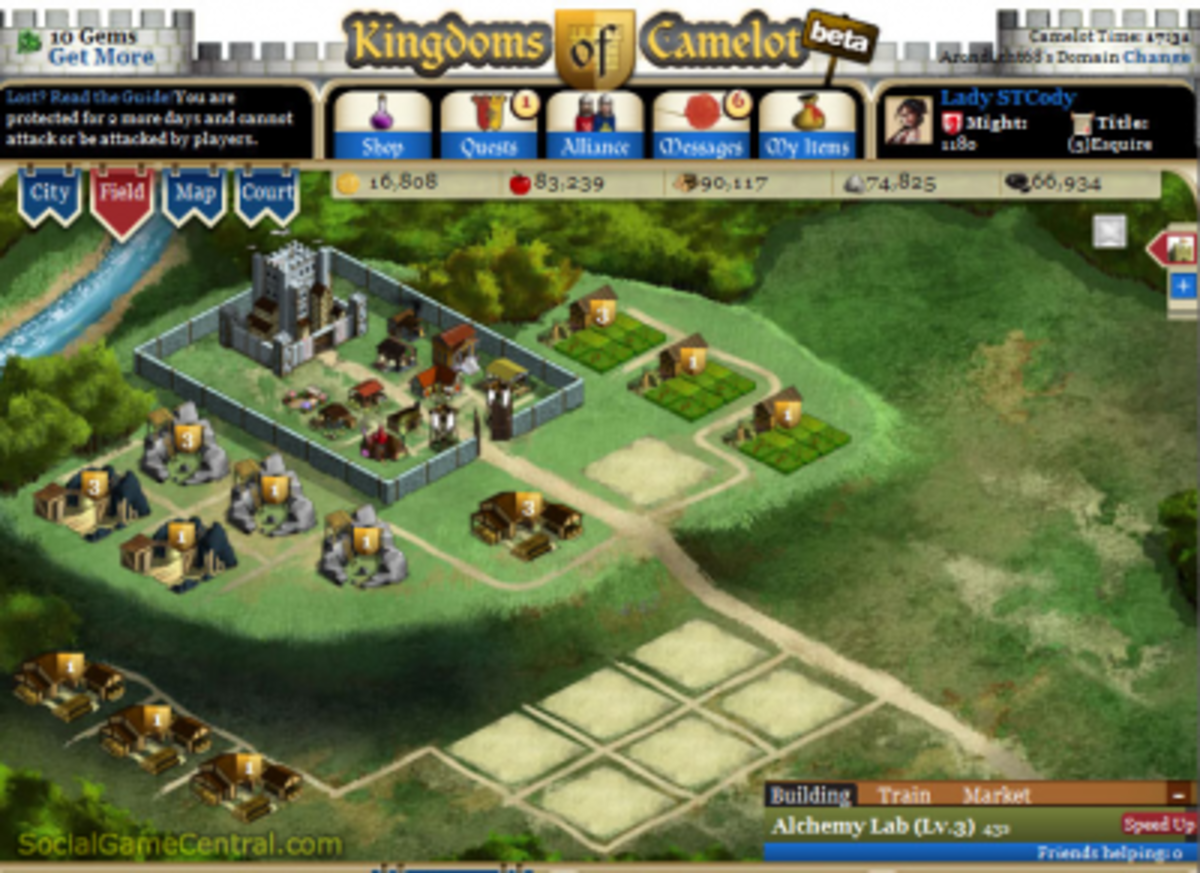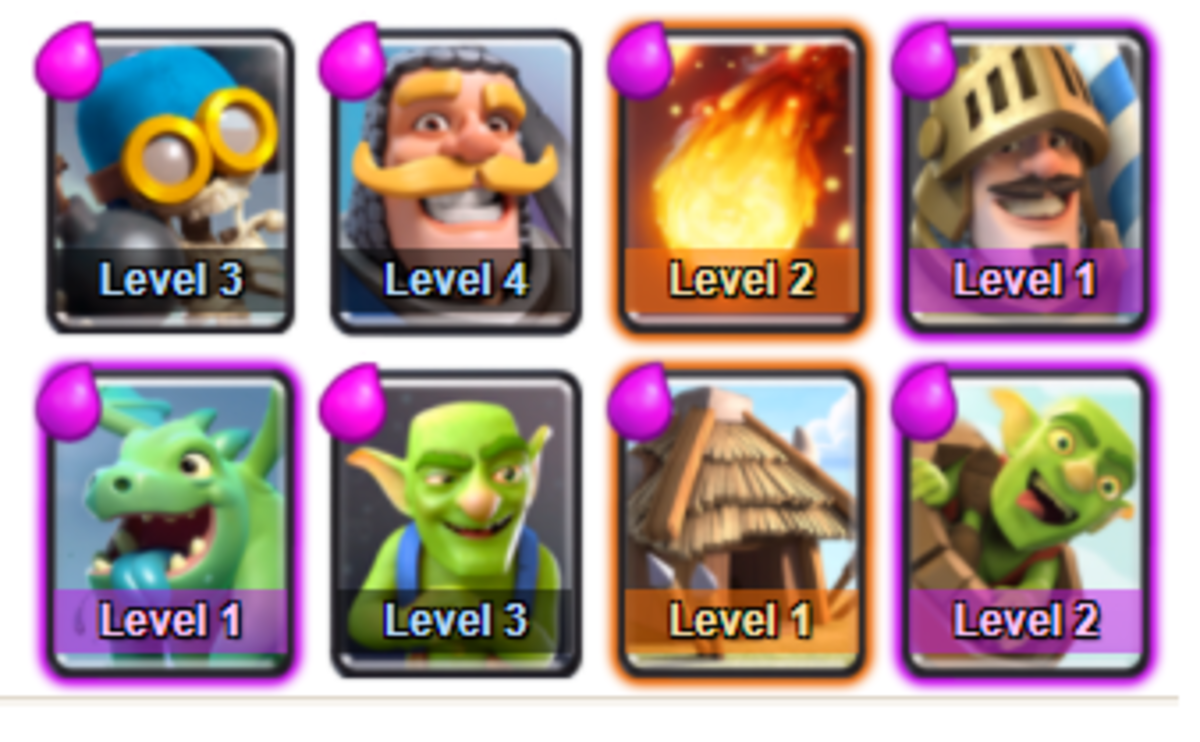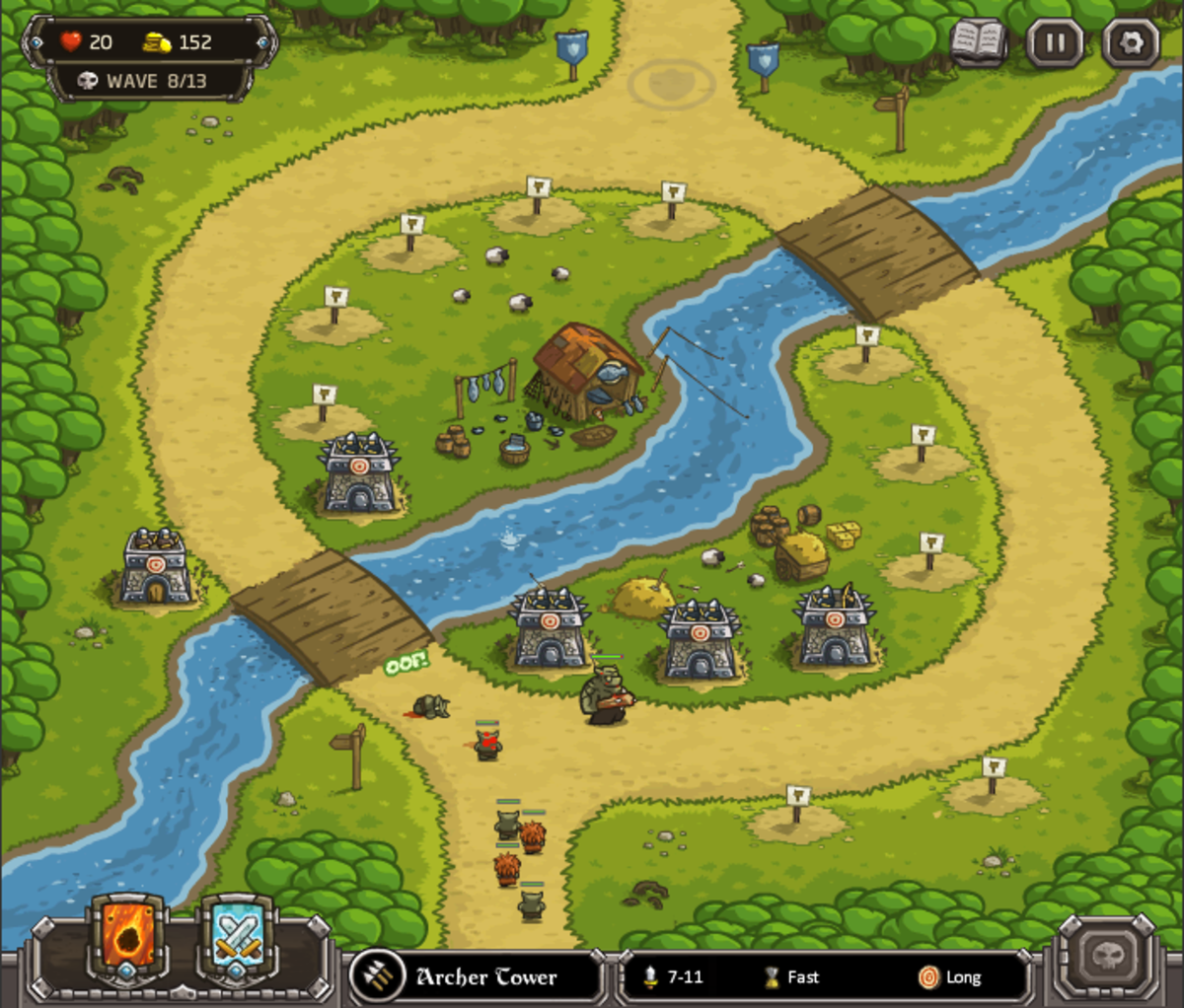- HubPages»
- Games, Toys, and Hobbies»
- Computer & Video Games»
- Online Video Games
Kingdoms of Camelot Tutorial - Field Management
Field Units Overview
Kingdoms of Camelot, a real time strategy game for Facebook, balances the desire to have powerful armies with the need to produce resources to build and support those troops. This social networking site teams you up with people in an alliance and together you work in the Kingdoms of Camelot.
Before you start placing farms, sawmills, quarries or mines in your fields, you need to think about the end state of the game. When you have 200,000 troops, the resource you will need the most is not wood, stone or ore. It is food. Do yourself a favor as you are building your fields up and build almost exclusively farms early. It will save you a lot of headaches later!
Your troops eat a LOT of food, so prepare yourself now, even if it means that you will not increase your might as fast as you would like.
Enjoy this social networking game, and meet new people in the alliances.

Farms
Farms produce Food, important for buildings and feeding your troops. Higher levels produce more food.
With a level 10 Castle, you will have 40 resource slots available to you in your fields. Ideally, you should have one mine, one sawmill, one quarry and 37 farms. If all your farms are level 9, you will be earning 166,500 food per hour (37 x 4,500). Bump those farms up to level 10 with a Divine Inspiration, and you are at 203,500 food per hour.
Don't forget that you have two cities. Repeat that allocation of farms in each city, and you will be earning between 300,000 and 400,000 food per hour. That will, in turn, allow you to keep a much larger troop level without running net negative food supply.
- Level 1 - Requires 10 workers, produces 100 food per hour and capacity of 10,000
- Level 2 - Requires 30 workers, produces 300 food per hour and capacity of 30,000
- Level 3 - Requires 60 workers, produces 600 food per hour and capacity of 60,000
- Level 4 - Requires 100 workers, produces 1,000 food per hour and capacity of 100,000
- Level 5 - Requires 150 workers, produces 1,500 food per hour and capacity of 150,000
- Level 6 - Requires 210 workers, produces 2,100 food per hour and capacity of 210,000
- Level 7 - Requires 280 workers, produces 2,800 food per hour and capacity of 280,000
- Level 8 - Requires 360 workers, produces 3,600 food per hour and capacity of 360,000
- Level 9 - Requires 450 workers, produces 4,500 food per hour and capacity of 450,000
- Level 10 - Requires 550 workers, produces 5,500 food per hour and capacity of 550,000

Sawmill
Sawmills produce wood, necessary for buildings and training troops.
Only build one! You do not need more than that. If you smartly loot inactive players and barbarian camps, you will never need to build more than one sawmill.
- Level 1 - Requires 10 workers, produces 100 food per hour and capacity of 10,000
- Level 2 - Requires 30 workers, produces 300 food per hour and capacity of 30,000
- Level 3 - Requires 60 workers, produces 600 food per hour and capacity of 60,000
- Level 4 - Requires 100 workers, produces 1,000 food per hour and capacity of 100,000
- Level 5 - Requires 150 workers, produces 1,500 food per hour and capacity of 150,000
- Level 6 - Requires 210 workers, produces 2,100 food per hour and capacity of 210,000
- Level 7 - Requires 280 workers, produces 2,800 food per hour and capacity of 280,000
- Level 8 - Requires 360 workers, produces 3,600 food per hour and capacity of 360,000
- Level 9 - Requires 450 workers, produces 4,500 food per hour and capacity of 450,000
- Level 10 - Requires 550 workers, produces 5,500 food per hour and capacity of 550,000

Quarry
Quarries produce stone. Stone is the foundation of your buildings allowing them to withstand attacks and time.
Note: Do not EVER (and in case the emphasis on the all-caps wasn't enough, I'll try it again with a bold font) EVER build more than one Quarry. Stone is dirt cheap and is very easy to loot off of other players. You are wasting valuable space in your fields if you reserve more than one space for a quarry. Did I stress enough that you should never build more than one quarry?
If I didn't convince you yet, look at the number of workers required to run a quarry. It is roughly double that of a farm. If you would have had a farm in that field slot, you would have freed up hundreds of workers and be producing a more valuable asset.
- Level 1 - Requires 20 workers, produces 100 food per hour and capacity of 10,000
- Level 2 - Requires 60 workers, produces 300 food per hour and capacity of 30,000
- Level 3 - Requires 120 workers, produces 600 food per hour and capacity of 60,000
- Level 4 - Requires 200 workers, produces 1,000 food per hour and capacity of 100,000
- Level 5 - Requires 300 workers, produces 1,500 food per hour and capacity of 150,000
- Level 6 - Requires 420 workers, produces 2,100 food per hour and capacity of 210,000
- Level 7 - Requires 560 workers, produces 2,800 food per hour and capacity of 280,000
- Level 8 - Requires 720 workers, produces 3,600 food per hour and capacity of 360,000
- Level 9 - Requires 900 workers, produces 4,500 food per hour and capacity of 450,000
- Level 10 - Requires 1,100 workers, produces 5,500 food per hour and capacity of 550,000

Mine
Mines produce ore, which is necessary to create any metal your city needs, from weapons to nails.
If you were going to build more than one of ANY resource producing field unit, it would be a mine. You will not find as much ore by looting other players, and the ore loot in barbarian camps is horrible. My recommendation still holds to build only one, but you may find that it slows you down at the beginning of the game.
It may be worth using a Dragon Stomp later if you do decide to build more than one.
- Level 1 - Requires 25 workers, produces 100 food per hour and capacity of 10,000
- Level 2 - Requires 75 workers, produces 300 food per hour and capacity of 30,000
- Level 3 - Requires 150 workers, produces 600 food per hour and capacity of 60,000
- Level 4 - Requires 250 workers, produces 1,000 food per hour and capacity of 100,000
- Level 5 - Requires 375 workers, produces 1,500 food per hour and capacity of 150,000
- Level 6 - Requires 525 workers, produces 2,100 food per hour and capacity of 210,000
- Level 7 - Requires 700 workers, produces 2,800 food per hour and capacity of 280,000
- Level 8 - Requires 900 workers, produces 3,600 food per hour and capacity of 360,000
- Level 9 - Requires 1,125 workers, produces 4,500 food per hour and capacity of 450,000
- Level 10 - Requires 1,375 workers, produces 5,500 food per hour and capacity of 550,000








